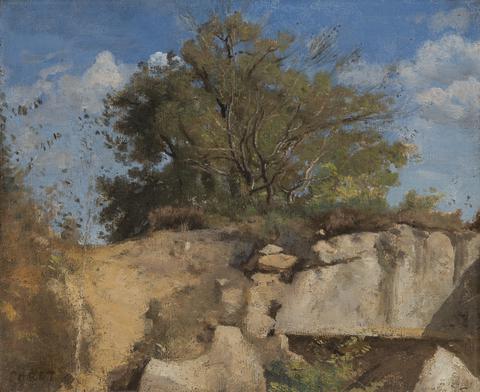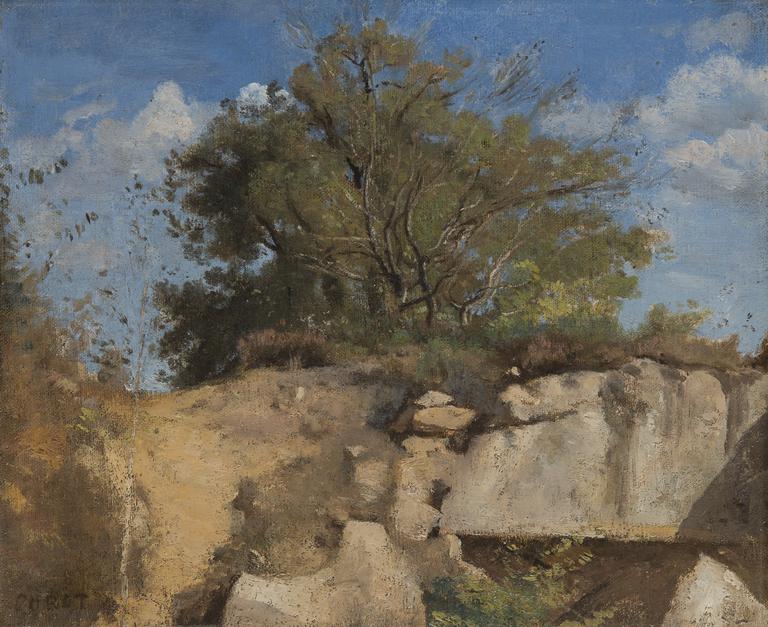
Fontainebleau, sommet de carrière boisée
Jean-Baptiste Camille Corot (1796 Paris - 1875 Paris)
1860
Huile sur toile ; signée « Corot » en bas à gauche ; 24,1 x 28,8 cm
Provenance :
L'Isle Adam, vente anonyme, 5 avril 1891 ; Versailles, collection Bercy ; Suisse, collection privée (en 1930) ; New York, Sotheby’s, 8 novembre 2013.
Bibliographie :
Alfred Robaut, L'Œuvre de Corot. Catalogue raisonné et illustré, vol. III, Paris, L. Laget, 1965, n° 1320 (reproduit).
D’après Alfred Robaut, ami de l’artiste et auteur du premier catalogue raisonné, qui le date des années 1860, ce tableau aurait été offert par Corot à sa sœur de lait, Julie Langlois. En excellent état, il a gardé toute la fraîcheur de la touche et la vivacité de la couleur. La composition, atypique, évoque les audaces de la génération suivante et particulièrement Cézanne, la Carrière de Bibemus (Essen, Folkwang Museum).
Le site, la végétation, les dalles de grès, le chemin de sable argileux, sont caractéristiques de la forêt de Fontainebleau. Corot, dès son apprentissage auprès d’Achille-Etna Michallon (1796-1822), a pris l’habitude d’y peindre en plein air. En 1836 Théodore Rousseau s’y installe et à sa suite les peintres de l’école de Barbizon, envers laquelle, comme envers l’impressionnisme ensuite, Corot garde une distance amicale et rêveuse.
Le motif seul, au fond, l’intéresse, et non la théorie. D’un chêne isolé qui déploie ses branches en surplomb d’un amas pierreux, d’un bouleau famélique au pied d’un sentier escarpé, du ciel qui défile comme un décor, et jusqu’au soleil qui les éclaire et les découpe, il fait une scène de théâtre. Ce chef-d’œuvre de la peinture de plein air, dans son assurance et sa spontanéité, est aussi un beau moment de lyrisme.
Dans ces mêmes années, entre 1864 et 1869, Flaubert écrit L’Éducation sentimentale. Frédéric et sa compagne Rosanette se promènent en forêt de Fontainebleau : « Un peintre en blouse bleue travaillait au pied d’un chêne, avec sa boîte à couleurs sur les genoux. » Et soudain l’écrivain semble se mesurer à ce peintre : « des chênes rugueux, énormes, qui se convulsaient (...) des rochers ayant des vagues formes d’animaux (...) les sables, frappés par le soleil, l’éblouissaient. » Magie de la correspondance des arts, et témoignage d’une époque où grâce au chemin de fer, l’art et la bourgeoisie, peut-on dire, sortent des salons et battent la campagne.
